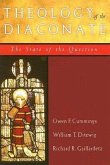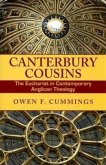In the years since the Second Vatican Council (1962-65) reestablished deacons as a permanent order of the clergy, the diaconate has evolved into one of the most visible and fastest growing areas of ordained ministry within the Church. However, to many who grew up thinking of deacons as merely on a transitional step up the ecclesiastical ladder, the sudden proliferation of permanent members of this order has been both surprising, and mystifying--"and edifying. In Saintly Deacons, Owen Cummings explores the remarkable history and evolution of the diaconate through the lives of six notable deacons over the two millennia of Christian history. It traces the tradition from its origians with New Testament "Apostolic" "deacons," Stephen and Philip, to patristic deacons, Lawrence and Ephrem, through the medieval deacons, Alcuin of York and Francis of Assisi, and ends with the Reformation Era deacons, Reginald Pole and Nicholas Ferrar. Cummings shows that, throughout their long history, deacons have not been defined by a narrow job description, but rather have offered themselves to serve the local church as best they can, in accordance with their Godgiven gifts, the request of their bishops, and the tasker that need to be done. And he demonstrates the particular value and relevance of this versatile role in today's church. Saintly Deacons takes a historical perspective and demonstrates the remarkable breadth of diaconal service through the ages. By including the Anglican deacon, Nicholas Ferrar of Little Gidding, Cummings has given this book an ecumenical relevance. Written in a focused and reader-freindly style, his book wil appeal to all Catholics, and will be of particular interest to membersof the diaconate, participants in permanent deacon programs, and parishioners who want to understand more about the background of the deacons within their own parish.
Hinweis: Dieser Artikel kann nur an eine deutsche Lieferadresse ausgeliefert werden.
Hinweis: Dieser Artikel kann nur an eine deutsche Lieferadresse ausgeliefert werden.








